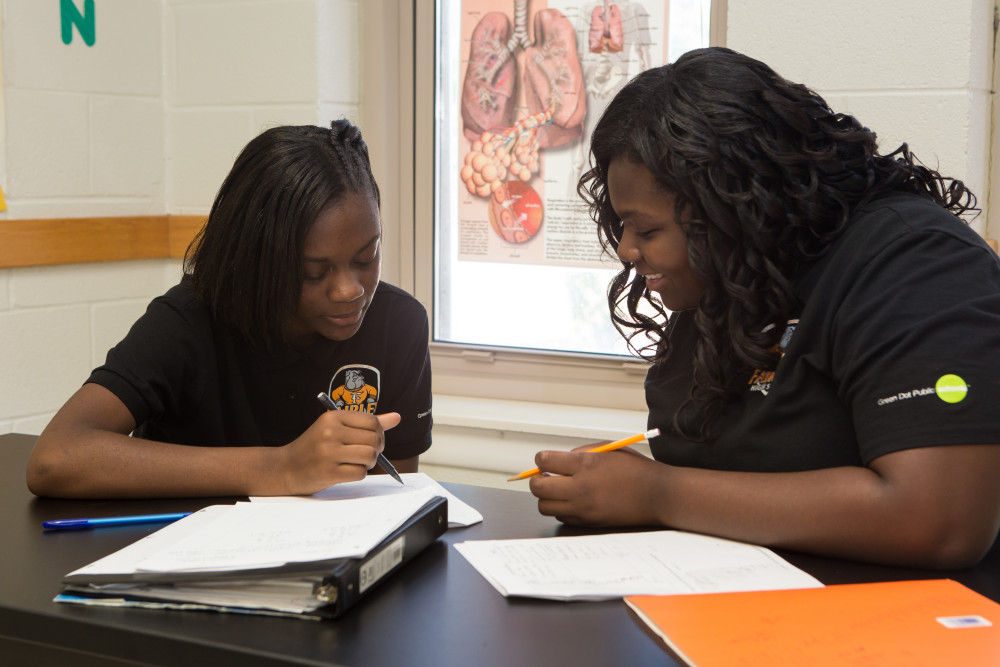The Science Behind a School Restart

The debate over public education is often cast in terms of how to “fix” chronic performance issues at certain schools. Major philanthropists join with reform-minded political forces to “remake” the public education system. School districts and educators frequently feel maligned amid the debate. Meanwhile, many families are on a mission to ensure that their children have meaningful pathways to opportunity, often paved by the education they receive.
Jon Rybka, at the Michael and Susan Dell Foundation, recently wrote about quality school options, his analysis focuses on the potential for success at “restarts” or “turnarounds” schools where operators take on leading an existing school. Green Dot Public Schools is distinguishing itself as a specialist in this particular form of intervention with our partner school districts. Mr. Rybka writes:
To begin to answer the question of the effectiveness of restarts, we developed a landscape analysis of the space where we took a deeper look at restart operators and their results. The baseline we used for this analysis was the school’s performance before the restart operator assumed responsibility. And, as I mentioned in my last blog, the sample size was small: approximately 115 schools identified as having undergone a full restart, managed by a restart operator and with testing data as of 2013. Some compelling results were:
- In five years, the average of all restart operators showed that both ELA (also referred to as “Reading”) and Math scores increased.
- And proficiency rates more than doubled in both subjects.
These results echo what we have seen at schools like Locke High in Los Angeles, or at Fairley High School in Memphis. Both of these schools are in historically underserved neighborhoods, where marginalized communities have had to contend with chronic performance issues and typically high drop-out rates, violence, and basic proficiency challenges. As Mr. Rybka notes, assuming leadership and accountability for such a school is not the most popular activity for school operators, but many areas are seeing an increasing need for this work.
Green Dot Public Schools is seeking to disrupt the cycle of poverty in these neighborhoods with a goal of graduating students at a higher rate than their peers in more affluent areas. The idea is that the more normative post-secondary opportunities and readiness are, the more gateways out of poverty can grow. We already know that one’s chances of escaping poverty tumble without a quality post-secondary education.
So, what are the ingredients for a successful turnaround? Over the summer, Nora Kern wrote about Green Dot’s experiences as a leading “turnaround” operator. The upshot is that it is the toughest gig in public education today, and we invite devotees to addressing persistent obstacles to successful outcomes in public education to join us on the journey. The Dell study shows that when a non-profit public school operator like Green Dot takes on leadership of a school site, outcomes for students tend to improve. This shouldn’t serve as a canard for the tired debate between the types of intervention, but rather beg the question into exactly what conditions are required for success. As Mr. Rybka puts it:
But the debate shouldn’t focus on whether or not ALL restarts work. Rather, the focus should be on two questions: 1) do we understand what makes a restart operator successful, and 2) what are the conditions necessary to increase the number of high quality restart operators?
We couldn’t agree more.


After a century and a half of public education, a century of youth development services and a half century of government supported intervention and prevention services, too many children are still failing in
school or drifting through life. We have unfortunately, labeled these children as “at risk,” and by doing so
have unwittingly sealed (in many cases) their fate. Additionally, the Gallup Student Poll reports that almost 50 percent of school age children grades 5-12 grow up hopeless and lack a sense of engagement in their schools and communities. These findings correlate to school failure, teen suicide, and a sense of aimlessness. The greatest at risk factors lie not just in family dynamics, social conditions, or community poverty of services, but in our personal beliefs about children, our relationships with them, and our ability to help children sense and prepare for a future in which they can succeed.
The three elements of success our children need in their lives are:
1)”Children succeed when they are surrounded by adults who believe they will succeed.” Known as the self-fulfilling prophecy and attribution theory, a half century of research confirms that adult’s attitudes and beliefs about children affect them, both positively and negatively.
2)”Children succeed when they have meaningful and sustainable relationships with caring adults.” Powerful and
incontrovertible evidence exists that children who are connected with caring adults through meaningful and sustainable relationships do much better than children who are not.
3) “Children succeed when they are able to articulate their future.” Recent science defines this capacity as being hopeful and hope is shown to improve attendance, increase credits earned, lead to a higher grade point average and increase a greater sense of well being, happiness and healthfulness. Most importantly, hope is not related to native intelligence or income and is malleable.
We do not need another program to set our young people up for success but rather a willingness and desire from those adults in our schools to LEAD an organizational culture that defines and states what we believe and value.
How about this? “At our school we will not give up on our students, nor will we tolerate anyone that does?”